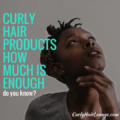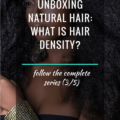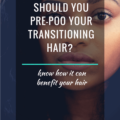If there’s one thing I often hear people talk about is how hard it is to moisturise their natural or transitioning hair now that they’ve decided to go natural. Usually, they complain about having tried everything in the book, or that their hair is just too difficult or impossible to work with, and some I find are too damn lazy or don’t give much thought to their hair. Either way, moisturising your transitioning hair is very important and you should always keep a close eye on your hair’s hydration level.
In this blog post, I will let you know what you need to know to keep your hair moisturised and why you need to know it. This information is relevant to everyone, but I know that if you’re transitioning to natural hair you need and helping hand, especially if you’re taking your first steps in the journey.
So what exactly is moisture? Why is it important?
Moisture or hydration basically means water. If your hair is in need of anything, the first thing you’ll be able to identify is moisture. The word moisture may not come to mind, but you will notice your hair is dry or rough to the touch, maybe a little brittle, it will be frizzy, look dull and will have less movement making it easy for split ends and breakage to occur.
Moisture, or water if you prefer, will allow your hair to remain more elastic (movement), smoother and softer, shinier and less frizzy. You will notice that most moisturising products like conditioners, leave-ins, detanglers, moisturisers and such will have water as their first ingredient or within their first ingredients.
However, water alone won’t be able to cater for all your hair needs! that is why you’ll also find in these products oils, humectants, butters and proteins. Water is great for natural hair but unfortunately, it escapes (read evaporates) quite easily from your hair. That is why these other ingredients are normally added to your hair products because they delay water evaporation from your hair either by trapping it from inside the hair strand or by forming a film around it.
“Water alone won’t be able to cater for all your hair needs!”
Of course, butter, oils and proteins have other things going on for them other than just helping to hold or lock moisture in. They provide important fatty acids, vitamins, and minerals that are paramount to the development of healthy hair.
But, are you focusing on the wrong thing?
Many people complain about the products they use and are constantly changing products with the hope of finding the Holy Grail that will solve all their hair problems. However, what many people forget is that in order to moisturise your hair properly you need to actually know your hair, you need to know it’s condition. It’s great you know about ingredients but are you using the ones YOUR hair needs? Do you know your hair? When I say this I don’t mean knowing your hair type/curl pattern.
In my honest opinion, curl pattern doesn’t have much to teach or inform us about how we need to moisturise our hair. Honestly, your hair type/curl pattern will teach more about the aesthetic look of your hair than anything else. Yes, you’ll be able to see if you have loose, tight corkscrew curls or kinky hair but that won’t inform what type of product(s) your hair needs, how much it needs or what hair regimen you need to develop for your natural hair.
To know that, you’ll get much more information from knowing your hair’s porosity, density, texture and elasticity. Then you’ll be able to find the right products for your hair. How so? Well, I’ve created the Free PDF Workbook Better Hair Knowledge For Better Moisture that you can download. The workbook will take you through the steps you need to discover your hair. Each step offers you links to further guidance in case you need it, and in the end, you’ll able to know your hair and what it needs.
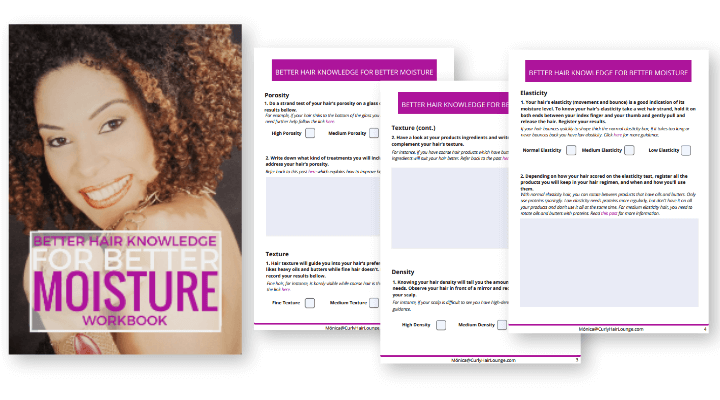

However, first, you need to read through this blog post to understand and have all the information sink in. Ok then, shall we have a look at what the four characteristics of your hair can teach us about moisture? Splendid!
Porosity
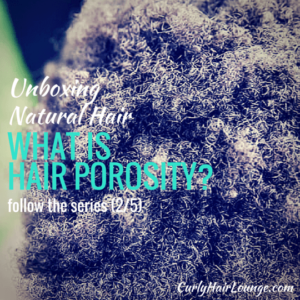 Porosity refers to your hair’s ability to retain water. Simply put, low porosity hair makes it difficult for moisture to penetrate into the hair because the cuticle layer that protects it is securely closed and doesn’t open easily. High porosity hair, on the other hand, is hair that has difficulties retaining moisture because it has the exact opposite problem of low porosity hair.
Porosity refers to your hair’s ability to retain water. Simply put, low porosity hair makes it difficult for moisture to penetrate into the hair because the cuticle layer that protects it is securely closed and doesn’t open easily. High porosity hair, on the other hand, is hair that has difficulties retaining moisture because it has the exact opposite problem of low porosity hair.
Transitioning hair is hair that has been chemically treated to permanently remain straight. This treatment basically makes your hair significantly more porous because the treatment needs to open your hair’s protective layers in order to work. Therefore, if you find your hair is always in need of moisture this is one of the reasons.
“Transitioning hair is chemically treated hair which makes your hair significantly more porous.”
What can you do to moisturise hair with porosity issues?
First, you need to find out what is your hair’s porosity and to do that you can do a water test. Place a dry clean hair strand (clarified hair) on a glass of water and leave it there for 10 to 15 minutes and see where it sinks. If it sinks all the way to the bottom you have high porosity, if it remains more or less at the top of the glass you have low porosity. However, if it stays in the middle, congrats you have what we all want -medium or normal porosity hair!
The test is not 100% reliable, but it will give you an indication of your hair’s porosity (not so much for transitioners). There are several things you can do to address both high and low porosity issues when it comes to keeping your hair moisturised and you can learn how by reading the post improve your hair’s porosity, but for now here are 2 solutions you can use for both hair conditions:
- Pre-poo your hair with a penetrating vegetable oil like coconut oil or olive oil they penetrate the hair strand help with protein loss, which is great for high porosity, they also leave a light oil film on the hair to help lock in all moisture.
- Deep condition your hair. For high porosity hair, your product needs to have humectants (i.e. panthenol, glycerine), vegetable oils or butters (i.e. shea or cocoa) to help with moisture retention as they’ll seal it in. You can also look for proteins in your deep conditioners, but you need to be careful not to saturate your hair with them as they can also dry your hair. For low porosity hair, you can also use moisturising deep conditioners, but to facilitate moisture penetration you should use a steamer or other form of heat. Check here for other heat suggestions.
You can also read more about the different types of conditioners there are and how you can use them well here, alternatively, you can also get to know how to make your own homemade deep conditioner if you read this blog post.
Texture
How thick is your hair? Would you say your hair is fine, medium or thick/coarse? These are the terms applied to describe hair texture. Knowing your hair texture is useful because it will inform or give you an indication of what your hair likes when it comes to moisture.
If you have fine hair you’ll notice that your hair doesn’t like heavy products or oils as they weigh it down making it look limp and greasy. People with fine hair normally long for hair volume. However, if you have fine hair you also have to be careful not to fall into the trap of not using enough product because you’re trying to avoid lifeless or oily hair. Or you’re choosing products that are not moisturising enough and leave your hair thirsty and dehydrated.
I, for instance, am heavy-handed when it comes to using products on my hair but that’s only because my hair is more robust than fine hair and can handle heavier moisturisers and oils, in fact, it craves them. This is a characteristic of coarse hair or medium to coarse hair (which is mine). If, however, you have medium hair texture you are in the soft spot and your hair is quite easy to moisturise and not very picky.
“Coarse or coarser hair is more robust than fine hair and can handle heavier moisturisers and oils, in fact, it craves them. Are you catering for these needs?”
Download your workbook right here:


What can you do to moisturise fine or coarse hair texture?
For fine hair, you should look for light moisturisers like Shea Moisture Curl Enhancing Smoothie, or Big Hair Leave-in Moisturising Milk. You should also use light vegetable oils or look for products that have light oils such as almond, grapeseed oil, avocado or jojoba oil. Avoid products that have butters or heavy oils such as castor oil in their first ingredients, they’ll make your hair feel heavy.
Coarse or coarser hair can handle heavy oils and butters or heavy-based products better. Butters and oils can help moisturise your hair because they delay moisture loss, but you must not forget one very important detail: if your hair is not already moisturised they will make your hair feel dry because they have no water in them. They will, in fact, prevent any moisture from getting in! So make sure you clean your hair properly first and depending on how you wanna style your hair use your water-based moisturiser/styler or buttercream.
Density
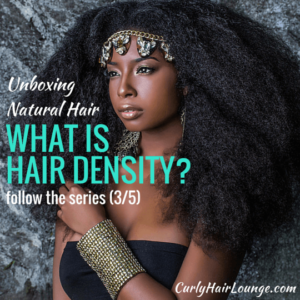 When you think of your hair would you say you have a lot of hair or not? Is it easy to see your scalp when you look in the mirror or not? I have what people consider a lion’s mane and therefore I have high-density hair. My daughter, on the other hand, has low-density hair as it is very easy to see her scalp without any effort. You, however, could be placed in the middle of this scale with medium density.
When you think of your hair would you say you have a lot of hair or not? Is it easy to see your scalp when you look in the mirror or not? I have what people consider a lion’s mane and therefore I have high-density hair. My daughter, on the other hand, has low-density hair as it is very easy to see her scalp without any effort. You, however, could be placed in the middle of this scale with medium density.
Hair density should guide the amount of product you need to moisturise your hair. Although it is a no-brainer to me now, before I started my transitioning journey I always followed the instructions on a product’s label without considering my hair density.
This can be a problem because you may not be providing your hair with enough moisture. Products won’t and can’t consider everyone’s density, so the suggestion on the product label is just that a suggestion. When considering how much product is enough, you must account for your hair density.
“When considering how much product is enough to moisturise your hair, you must account for hair density.”
Again, the amount of product I apply to my high-density hair is not the same as my daughter applies to her low-density hair. A jar of moisturiser will last far less to me than to her, therefore, you need to make sure you are moisturising your hair properly at the risk of making your hair dry and brittle. Also, porosity also has a bearing here. High porosity hair will quickly ‘drink’ of what it’s given, and maybe even ask for more, while low porosity hair will need less.
Elasticity
We all want hair with movement, that is bouncy, and hair that in its natural state is able to stretch and coil right back to its normal curl pattern. This means your hair has normal elasticity. If your hair takes a bit longer to bounce back into its shape it has medium elasticity, but if it takes too long or doesn’t regain its shape, or if breaks really, your hair has low elasticity.
Imagine what happens to an old rubber when it’s extended and released. It will either break or it won’t regain its form. This is very similar to what happens to your hair when it’s not properly moisturised. Your hair will be less manageable, will have less movement, it will be stiff, and it will break more easily.
What can you do to moisturise hair that lacks elasticity?
When I talk about moisturising our curly hair I’m not referring just to the moisturiser you apply after you cleanse and condition your hair. No! Keeping our hair moisturised is something we can start doing even before we wash our hair. Know how I’m always talking about pre-poo and how I included it in my routine? Well, this is one reason why! (You can get my tips to get the most out if here and 3 pre-poo recipes here.)
“Keeping our hair moisturised is something we can start doing even before we wash our hair.”
To keep your hair’s elasticity at optimal health you need to use products that will “feed” it’s inner structure, the cortex. You need proteins and oils. If you are a little bit confused bare with me as I explain how these can actually help you keep your hair moisturised.
I actually made a workbook for this post to help you discover your hair’s needs, remember?! There’s a lot going on besides what this post details (and this is a lot of info already), but with this workbook, you’ll be able to overcome any moisture difficulties or glitches you’re having. You’ll get to “meet” your hair and start catering for its needs.


As I said previously on this post, oils are unable to moisturise your hair alone, however, depending on the oil you choose it can keep your hair moisturised and help your hair’s elasticity. To do this you need to choose penetrating oils such as coconut oil, olive oil, jojoba oil or argan oil.
When your hair is moisturised these penetrating oils will delay moisture loss and keep your hair moisturised. Furthermore, because they are rich in essential fatty acids they will help keep and improve your hair’s elasticity.
As for proteins, they come in many shapes and sizes and your hair will have its own say on which ones it prefers. Regardless of this, when the hair product you use has small enough proteins that are able to penetrate the hair strand they will not only work to keep your hair strong and elastic, but they will also keep it moisturised.
These proteins are broken down into small pieces, amino acids which, once inside the hair strand, bond with your hair’s proteins and will actually hold moisture in for longer. For these, you can look for hydrolyzed proteins, collagen, keratin or amino acids in your product’s ingredients.
However, there’s one caveat with using proteins. Too much protein will have the exact opposite effect you’re trying to reach, it can make your hair dry, with little movement or elasticity.
This, of course, can also be the reason why your hair lacks moisture in the first place. You’re applying too much protein to your hair. I’m not saying you do this willingly. No! What I’m saying is that you may not have noticed that a product you use regularly has proteins as one of the first five ingredients. Or, several of the products you’re using have protein. Either way, it’s making your hair dry and you need to cut it out. Need more guidance about proteins? Read The Role Of Proteins In Hair Care. you can also use a hair journal to help you identify this.
Record the product you use, whether they have proteins or not and when you use. Over time, this will tell you if your problem is protein or something else. Use a notebook to take notes or use a journal like the Ultimate One-Year Natural Hair Journal.
If you find this is your case, stop using these products. When you notice your hair is no longer dry you can introduce proteins sparingly. Please notice that you can’t just cut proteins completely out of your hair regimen. No, your hair needs them!
However, you do have to pay attention to how much protein you’re actually supplying your hair. Some people may need it more frequently while others will only need it once every 2 or 3 months. Your hair care practices also have a say here. So you see, this is a case where too much of a good thing can actually make things worse.
“This is a case where too much of a good thing can actually make things worse.”
Final Thoughts
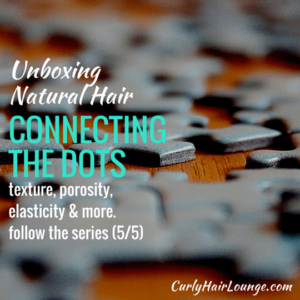 I know this is a lot of information to take in, especially when you’re new to all this and you are trying to do the best you can. Trust me, I was where you are a couple of years ago. To me, these are the most important elements to know about your transitioning hair when trying to moisturise it properly.
I know this is a lot of information to take in, especially when you’re new to all this and you are trying to do the best you can. Trust me, I was where you are a couple of years ago. To me, these are the most important elements to know about your transitioning hair when trying to moisturise it properly.
If you need some help connecting the dots between porosity, density, texture and elasticity you can read this post here, which is part of 5 post series. You will have me as a case study and I hope it can make things clearer for you.
Phew!! This was a lot to take in, I know!
Luckily, I’ve made a workbook to help you through each step of this blog post. Once you have this out of the way you’ll be in a much better place to continue your transitioning hair journey. So, take action! I encourage you to download and print the workbook, or you can fill it in on your Chrome browser and print it. You should read this post to help you, but there are also lots of clickable links in the workbook to help you through it.
Ultimately, if do all this and you still feel completely lost or you rather have some guided help you can always book a coaching session with me. 🙂




